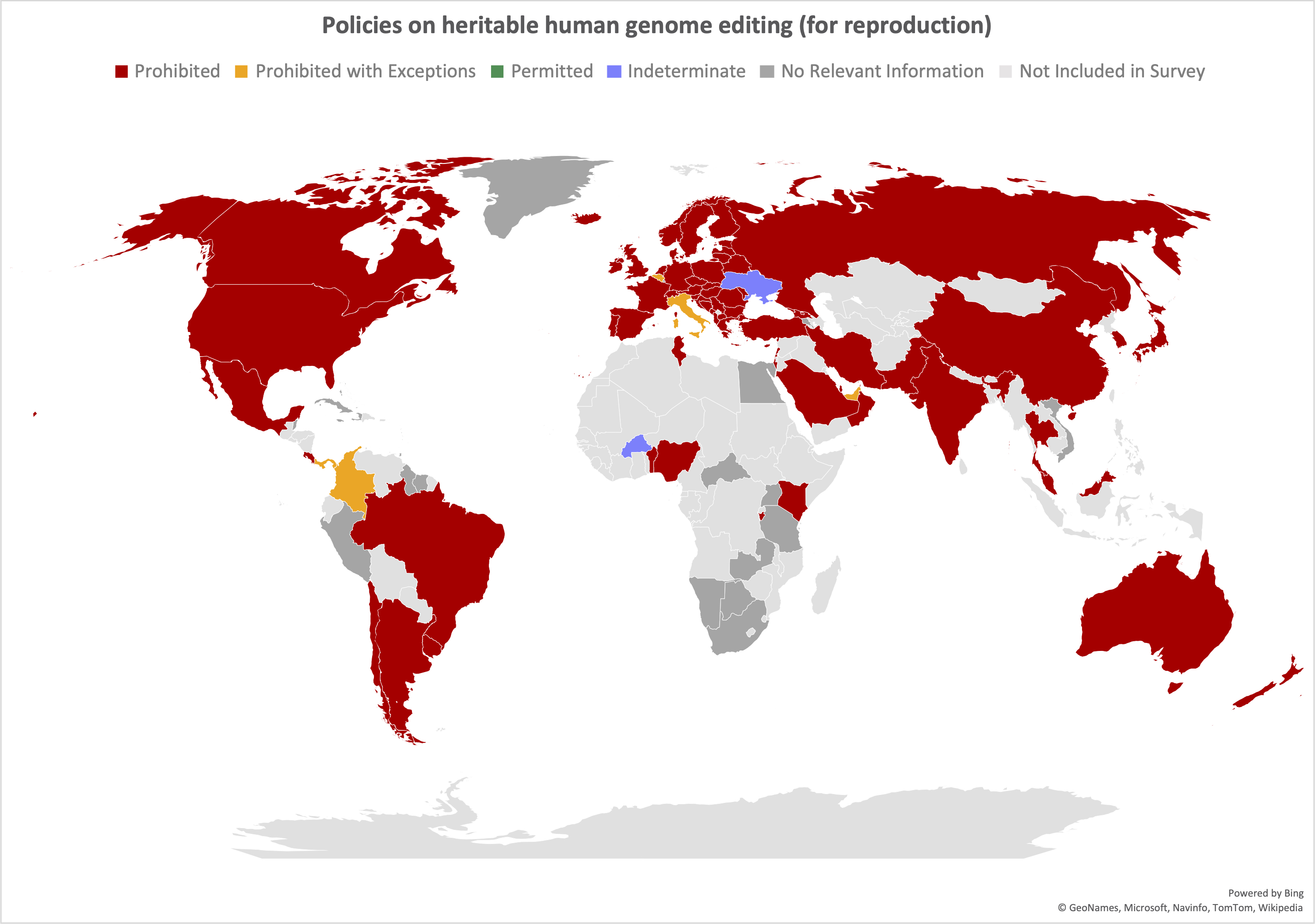Human Germline and Heritable Genome Editing: The Global Policy Landscape
By Françoise Baylis, Marcy Darnovsky, Katie Hasson, and Timothy M. Krahn,
The CRISPR Journal
| 10. 20. 2020
Abstract
Discussions and debates about the governance of human germline and heritable genome editing should be informed by a clear and accurate understanding of the global policy landscape. This policy survey of 106 countries yields significant new data. A large majority of countries (96 out of 106) surveyed have policy documents—legislation, regulations, guidelines, codes, and international treaties—relevant to the use of genome editing to modify early-stage human embryos, gametes, or their precursor cells. Most of these 96 countries do not have policies that specifically address the use of genetically modified in vitro embryos in laboratory research (germline genome editing); of those that do, 23 prohibit this research and 11 explicitly permit it. Seventy-five of the 96 countries prohibit the use of genetically modified in vitro embryos to initiate a pregnancy (heritable genome editing). Five of these 75 countries provide exceptions to their prohibitions. No country explicitly permits heritable human genome editing. These data contrast markedly with previously reported findings.
Introduction
Development of the CRISPR genome editing technology in 2012–131,2 intensified the decades-long controversy on the likely social...
Related Articles
By Jenny Lange, BioNews | 12.01.2025
A UK toddler with a rare genetic condition was the first person to receive a new gene therapy that appears to halt disease progression.
Oliver, now three years old, has Hunter syndrome, an inherited genetic disorder that leads to physical...
By Grace Won, KQED [with CGS' Katie Hasson] | 12.02.2025
In the U.S., it’s illegal to edit genes in human embryos with the intention of creating a genetically engineered baby. But according to the Wall Street Journal, Bay Area startups are focused on just that. It wouldn’t be the first...
By Pam Belluck and Carl Zimmer, The New York Times | 11.19.2025
Gene-editing therapies offer great hope for treating rare diseases, but they face big hurdles: the tremendous time and resources involved in devising a treatment that might only apply to a small number of patients.
A study published on Wednesday...
Several recent Biopolitical Times posts (1, 2, 3, 4) have called attention to the alarmingly rapid commercialization of “designer baby” technologies: polygenic embryo screening (especially its use to purportedly screen for traits like intelligence), in vitro gametogenesis (lab-made eggs and sperm), and heritable genome editing (also termed embryo editing or reproductive gene editing). Those three, together with artificial wombs, have been dubbed the “Gattaca stack” by Brian Armstrong, CEO of the cryptocurrency company...




